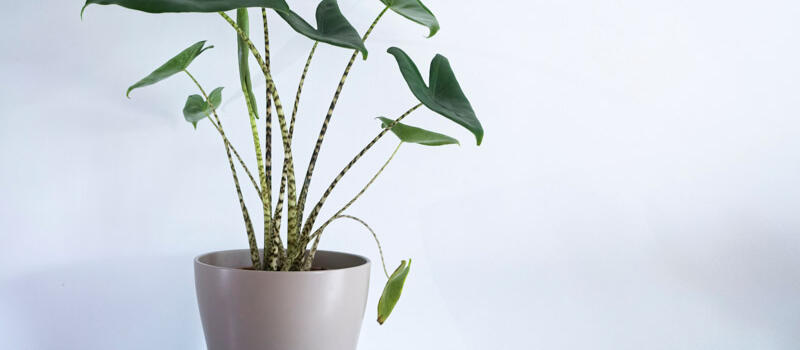
Алоказия зебрина (Уши слона): Все, что вам нужно знать (Alocasia zebrina (Elephant Ear): All You Need To Know)
Alocasia zebrina (Elephant Ear): All You Need To Know
Alocasia zebrina, commonly known as the Elephant Ear plant, is a stunning addition to any plant collection due to its striking foliage and unique appearance. Native to Southeast Asia, this plant has become popular among indoor plant enthusiasts.
Appearance
The most distinctive feature of Alocasia zebrina is its large, arrow-shaped leaves with unique zebra-like patterns on the stems. The leaves are typically glossy green, which contrasts beautifully with the patterned stems.
Light Requirements
Alocasia zebrina thrives in bright, indirect light. Direct sunlight can scorch the leaves, while too little light can cause the plant to become leggy and lose its vibrant color.
Watering
This plant prefers a humid environment and consistently moist soil. Water the plant when the top inch of soil feels dry, but be careful not to overwater, as this can lead to root rot.
Temperature and Humidity
Alocasia zebrina enjoys warmth and high humidity. Keep the plant in temperatures between 18-26°C (64-79°F) and consider using a humidifier or misting the leaves regularly to increase humidity levels.
Soil Requirements
The best soil for Alocasia zebrina is a well-draining potting mix that retains some moisture. Adding perlite or orchid bark can help improve drainage and aeration.
Fertilizing
During the growing season, which is spring and summer, provide Alocasia zebrina with a balanced, water-soluble fertilizer every few weeks. Reduce feeding during the fall and winter months.
Common Problems
- Pests: Alocasia zebrina can be susceptible to pests like spider mites and aphids. Regularly inspect the leaves and use insecticidal soap if needed.
- Yellowing Leaves: This can be a sign of overwatering or inadequate light. Adjust your care routine accordingly.
- Leaf Drop: Sudden changes in temperature or drafts can cause leaves to drop. Ensure a stable environment for your plant.
Propagation
The most common method of propagating Alocasia zebrina is through division. This should be done in the spring when repotting the plant. Carefully separate the rhizomes and plant them in individual pots.
Conclusion
Alocasia zebrina is a spectacular plant that, with proper care, can add a tropical flair to your indoor space. Understanding its needs for light, humidity, and water will help keep it healthy and thriving.
Отзывы
Требования
- Тип растения:
- Семейство: Araceae
- Род: Alocasia
- Общее Имя: Elephant Ear
- Освещенность: Частичное Солнце
- Сезон: Весна (Раннее, Среднее, Позднее) Лето (Раннее, Среднее, Позднее) Осень Winter
- Высота: 90см - 3m
- Распространение: 60см - 90см
- Расстояние: 60см - 90см
- Обслуживание: Минимум
- Потребность в воде: Средняя
- Тип почвы: Суглинистая
- pH почвы: Кислая, Нейтральная
- Дренаж почвы: Влажная, но хорошо дренированная
- Дополнительные характеристики: Эффектный, Вечнозеленый
- Использование в саду: Внутренний дворик и контейнеры
Народный рейтинг
- Эстетическая привлекательность:
- Уход и непритязательность:
- Устойчивость к климату:
- Здоровье и устойчивость к болезням:
- Полезность: